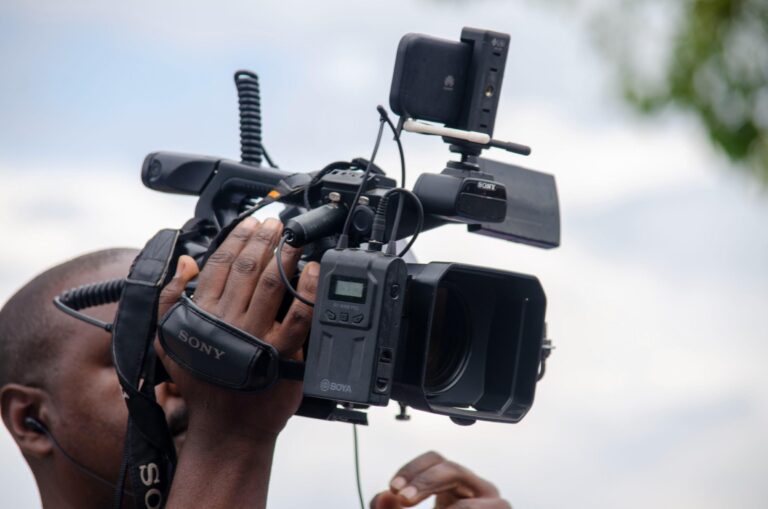Kenya, known for its stunning landscapes and rich biodiversity, is one of the world’s premier destinations for wildlife photography. Home to the iconic “Big Five”—lions, leopards, elephants, rhinos, and buffalo—along with countless other species, Kenya offers a unique blend of opportunities for photographers to capture the essence of Africa’s wild beauty. Here’s an overview of wildlife photography in Kenya, with tips on where to go, what to expect, and how to make the most of this incredible experience.
Table of Contents
Why Kenya for Wildlife Photography?
Kenya’s diverse ecosystems—from the vast savannahs of the Maasai Mara to the dense forests of Aberdare National Park and the arid landscapes of Samburu—make it an ideal location for capturing a variety of wildlife. In addition to the Big Five, Kenya’s ecosystems are home to zebras, giraffes, cheetahs, flamingos, hippos, and numerous bird species. This biodiversity, combined with Kenya’s commitment to conservation, creates a unique environment for capturing stunning wildlife images.






🏞️ Ready to Conquer New Heights? 🏔️
🚀 Join Joe Photography and Safaris for thrilling hiking adventures across Kenya! Meet new friends, explore breathtaking trails, and create unforgettable memories. 🌿✨
🎒 Join Our Hiking WhatsApp Group 🚀Hikes. Adventures. Friendships. Memories. 🌍
Top Wildlife Photography Destinations in Kenya
- Maasai Mara National Reserve
- Highlights: Known for the annual Great Migration, where millions of wildebeest, zebras, and gazelles cross the Mara River.
- Best Time: July to October for the migration, though excellent year-round.
- Wildlife: Lions, cheetahs, leopards, elephants, and the migratory herds.
- Amboseli National Park
- Highlights: Famous for its views of Mount Kilimanjaro and large elephant herds.
- Best Time: June to October during the dry season when animals gather at watering holes.
- Wildlife: Elephants, giraffes, lions, zebras, and over 400 species of birds.
- Lake Nakuru National Park
- Highlights: Known for its pink-hued flamingo flocks and rhino population.
- Best Time: Year-round, but flamingos are most abundant after the rainy season.
- Wildlife: Flamingos, white and black rhinos, leopards, and baboons.
- Samburu National Reserve
- Highlights: Home to rare “Samburu Special Five”—Grevy’s zebra, Somali ostrich, reticulated giraffe, Beisa oryx, and gerenuk.
- Best Time: June to October and January to February.
- Wildlife: Special Five, elephants, leopards, and a unique variety of birds.
- Tsavo National Parks (East and West)
- Highlights: One of Kenya’s largest parks, known for its red-dust elephants and vast landscapes.
- Best Time: May to October and January to February.
- Wildlife: Red elephants, lions, hippos, and crocodiles.
Wildlife Photography Tips for Kenya
- Understand Animal Behavior: Knowing animal habits and peak activity times will help you anticipate movements and capture dynamic shots. Predators, for instance, are most active during early mornings and late evenings.
- Use the Right Equipment:
- Telephoto Lenses: For capturing distant wildlife without disturbing them, a lens of at least 200-400mm is recommended.
- Fast Shutter Speed: Animals are often in motion, so a fast shutter speed (1/1000s or faster) helps freeze the action.
- Tripods or Bean Bags: Stabilize your camera to avoid blurry shots, especially with telephoto lenses.
- Be Patient and Respectful: Wildlife photography requires patience. Allow animals to come to you and observe ethical practices, like keeping a respectful distance to avoid stressing the animals or altering their behavior.
- Capture the Landscape: Kenya’s stunning landscapes are as much a part of the story as the animals themselves. Including elements like Mount Kilimanjaro in the background or the open savannah at sunset can add depth to your wildlife shots.
- Use Natural Light to Your Advantage: The “golden hours”—early morning and late afternoon—provide soft, warm light that enhances colors and adds dimension to images. In Kenya, the light during these times can make for breathtaking photos.
Best Time of Year for Wildlife Photography in Kenya
The dry seasons, from June to October and January to February, are ideal for wildlife photography. During these months, animals gather around water sources, making them easier to find and photograph. For those aiming to photograph the Great Migration, the peak months are typically July through October in the Maasai Mara.
Conservation and Ethical Considerations
Wildlife photography in Kenya goes hand-in-hand with a commitment to conservation. Many of Kenya’s parks and reserves are actively working to protect endangered species and habitats. Supporting eco-friendly tourism companies, respecting park guidelines, and practicing ethical photography can all contribute to preserving Kenya’s natural beauty for generations to come.
The Importance of Conservation Photography in Kenya
Kenya’s wildlife faces threats from poaching, habitat loss, and climate change. Conservation photography helps raise awareness about these issues, encouraging both locals and the international community to support wildlife protection efforts. Conservation photographers in Kenya can contribute to preserving wildlife by using their images to educate and inspire people about the importance of conservation.
FAQs on Wildlife Photography in Kenya
What are the best locations in Kenya for wildlife photography?
Kenya offers numerous outstanding locations for wildlife photography, including the Maasai Mara National Reserve, Amboseli National Park, Lake Nakuru, Tsavo East and West, and Samburu National Reserve. Each of these locations is unique in terms of landscapes and wildlife, from the Great Migration in Maasai Mara to the large elephant herds in Amboseli with Mount Kilimanjaro as a backdrop.
When is the best time of year for wildlife photography in Kenya?
The best time for wildlife photography is during the dry seasons, from June to October and January to February, when animals gather around water sources, making them easier to spot. The Great Migration, which occurs from July to October in the Maasai Mara, is also an incredible time for photography, offering dramatic scenes of wildebeest and zebra crossings.
What equipment should I bring for wildlife photography in Kenya?
A DSLR or mirrorless camera with a telephoto lens (200-400mm or higher) is ideal for capturing distant animals. A tripod or bean bag is helpful for stability, especially with long lenses. You may also want a wide-angle lens for landscape shots and extra batteries and memory cards, as wildlife photography often requires extended time in the field.
How do I practice ethical wildlife photography in Kenya?
Ethical wildlife photography involves respecting animals’ natural behaviors and habitats. Avoid getting too close or using flash, as this can disturb wildlife. Stay on designated paths, follow park rules, and work with reputable guides who prioritize animal welfare and conservation. Always maintain a safe distance to protect both yourself and the animals.
What should I know about photographing the Great Migration in Kenya?
The Great Migration is a highlight for wildlife photographers, typically taking place from July to October in the Maasai Mara. To capture the best shots, plan to spend a few days in the Mara to increase your chances of seeing river crossings. Patience is key, as crossings are unpredictable. Arrive early in the morning or late in the afternoon for the best light and ideal photography conditions.
Must Read:



